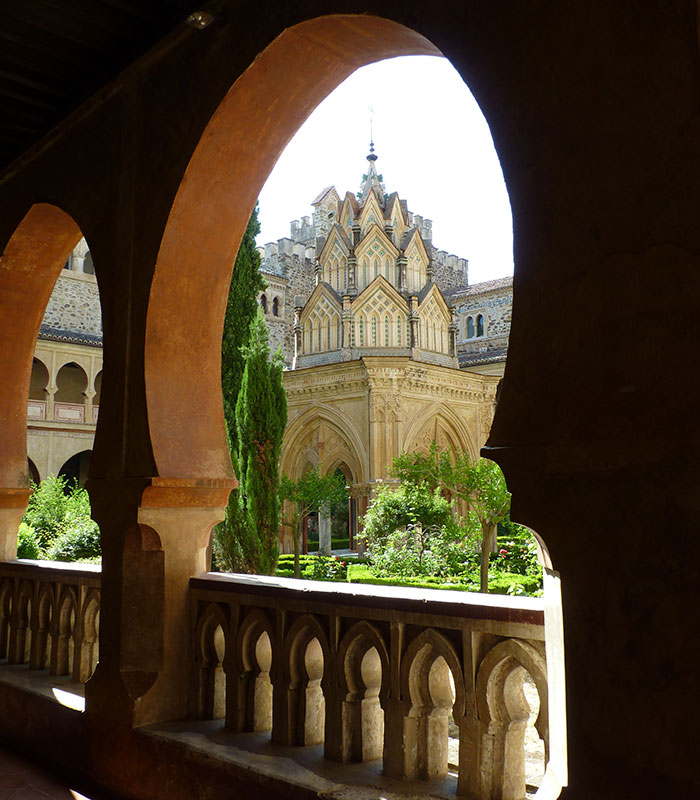As if it were protecting a precious jewel, the Mudejar cloister of the Real Monasterio de Santa María de Guadalupe envelops and watches over one of the most important architectural treasures of the Villuercas-Ibores-Jara Global Geopark of the UNESCO. This is a small shrine in the middle of a monastic garden to represent the most exquisite architecture of its time and which today is one of the greatest attractions of the monumental ensemble.
There is no doubt that one of the main architectural ensembles of the Real Monasterio de Guadalupe is the Mudejar cloister or the cloister of the Miracles, in the centre of which is the ‘Mudejar Shrine’.
This central element, which is considered to be the apotheosis of the Gothic Mudejar style, was constructed in the late 14th century and the early 15th century. It has many aesthetic similarities with the Chapel of El Humilladero, which is located at the entrance to Guadalupe from the north via Navalmoral de la Mata. This together with the fact that both were built in the same period suggests that both works were the result of the same artistic inspiration.

